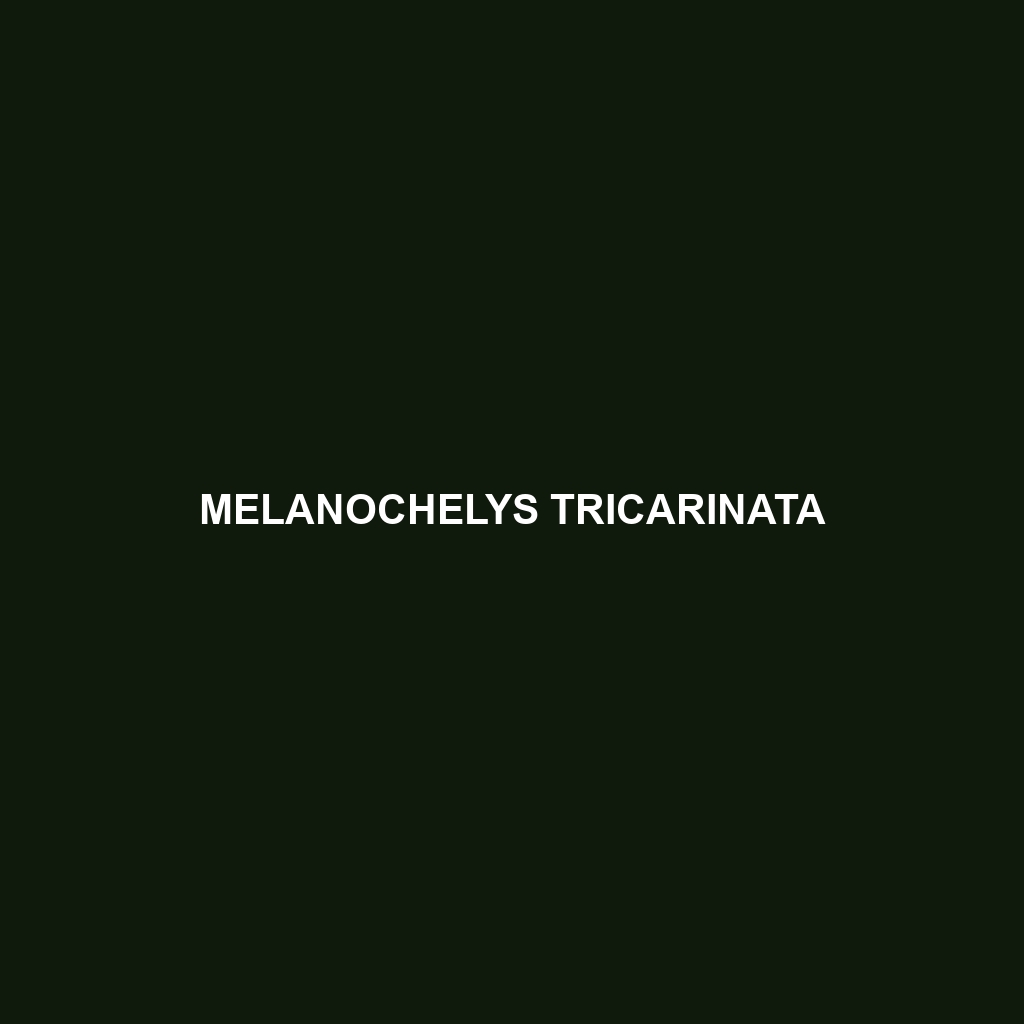Common Name
Melanochelys tricarinata
Scientific Name
Melanochelys tricarinata
Habitat
Melanochelys tricarinata, commonly known as the three-keeled pond turtle, is primarily found in aquatic habitats across various geographic regions including tropical areas of Southeast Asia, particularly in countries like India, Bangladesh, and Myanmar. This species prefers still or slow-moving freshwater bodies, such as rivers, ponds, and marshes, but can occasionally be found in surrounding rainforest and savanna areas where water is abundant. The climate in these habitats typically spans from warm tropical to subtropical, characterized by high humidity and abundant rainfall, making these regions ideal for the growth of vegetation that supports the local ecosystem.
Physical Characteristics
The three-keeled pond turtle exhibits distinct physical traits that set it apart from other turtle species. On average, Melanochelys tricarinata can grow to a carapace length of about 20 to 30 centimeters, characterized by a streamlined shell with three prominent keels running from the front to the rear. The color of its shell ranges from dark brown to olive green, often with yellow or cream-colored markings along the edges. This species has a relatively flattened body shape, which aids in swimming. Its limbs are strong and paddle-like, well adapted for aquatic locomotion. The head is typically small with a pointed snout, featuring a pair of prominent, protruding eyes, allowing for excellent vision both in and out of water.
Behavior
Melanochelys tricarinata exhibits a variety of behavioral patterns that enhance its survival within its habitat. While primarily diurnal, these turtles may exhibit nocturnal behavior, becoming more active during the cooler evenings, particularly during the hot seasons. Socially, they are known to be relatively solitary, often basking alone on logs or stones to absorb sunlight. During the breeding season, males engage in competitive display behaviors to attract females, which can include head bobbing and circling. These turtles are also recognized for their unique resting habits, often burying themselves in mud or vegetation to evade predators during the hottest parts of the day.
Diet
Melanochelys tricarinata is generally considered an omnivore, indulging in a varied diet consisting of both plant and animal matter. Their dietary habits include feeding on aquatic plants, algae, insects, mollusks, and small fish, depending on their availability within their aquatic surroundings. This flexibility in feeding allows them to adapt to seasonal changes in food resources, which is crucial for their survival in fluctuating environments. Studies suggest that their diet plays a significant role in the health and balance of their ecosystem, contributing to nutrient cycling through their feeding habits.
Reproduction
The reproductive cycle of Melanochelys tricarinata typically occurs during the warmer months when environmental conditions are favorable and food sources are abundant. Mating usually takes place in shallow waters, with males displaying courtship behaviors to attract females. After successfully mating, females will search for suitable nesting sites, often along sandy riverbanks or in well-drained areas close to water. The gestation period lasts approximately 60 to 90 days, depending on environmental conditions, leading to clutches of anywhere from 5 to 15 eggs. These eggs are left to incubate on their own, and once hatched, there is little to no parental care provided, as the young turtles are expected to fend for themselves immediately.
Conservation Status
According to the IUCN Red List, Melanochelys tricarinata is classified as “Vulnerable.” The population is threatened primarily due to habitat loss, pollution, and human encroachment, as many freshwater habitats are being altered or destroyed for agriculture and urban development. Conservation efforts are ongoing, with initiatives aimed at habitat restoration, legal protection, and public awareness campaigns to promote the species’ importance in their ecosystem. However, challenges continue to undermine these efforts, including illegal pet trade and environmental degradation.
Interesting Facts
One of the most fascinating aspects of Melanochelys tricarinata is its unique adaptation to varying water conditions. These turtles are capable of tolerating a range of salinity levels, which allows them to inhabit brackish water areas, something not common among freshwater turtles. Additionally, they have been observed displaying interesting thermoregulatory behaviors, such as soaking their limbs in water to cool down while basking in the sun.
